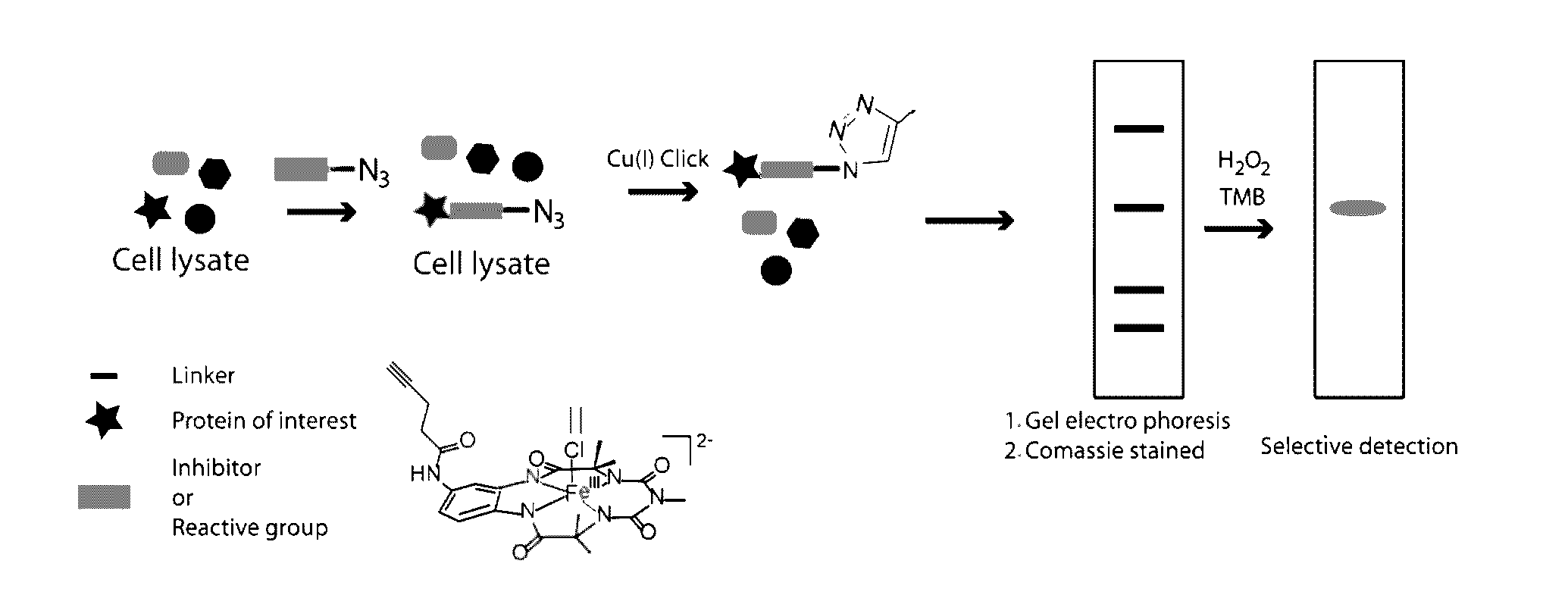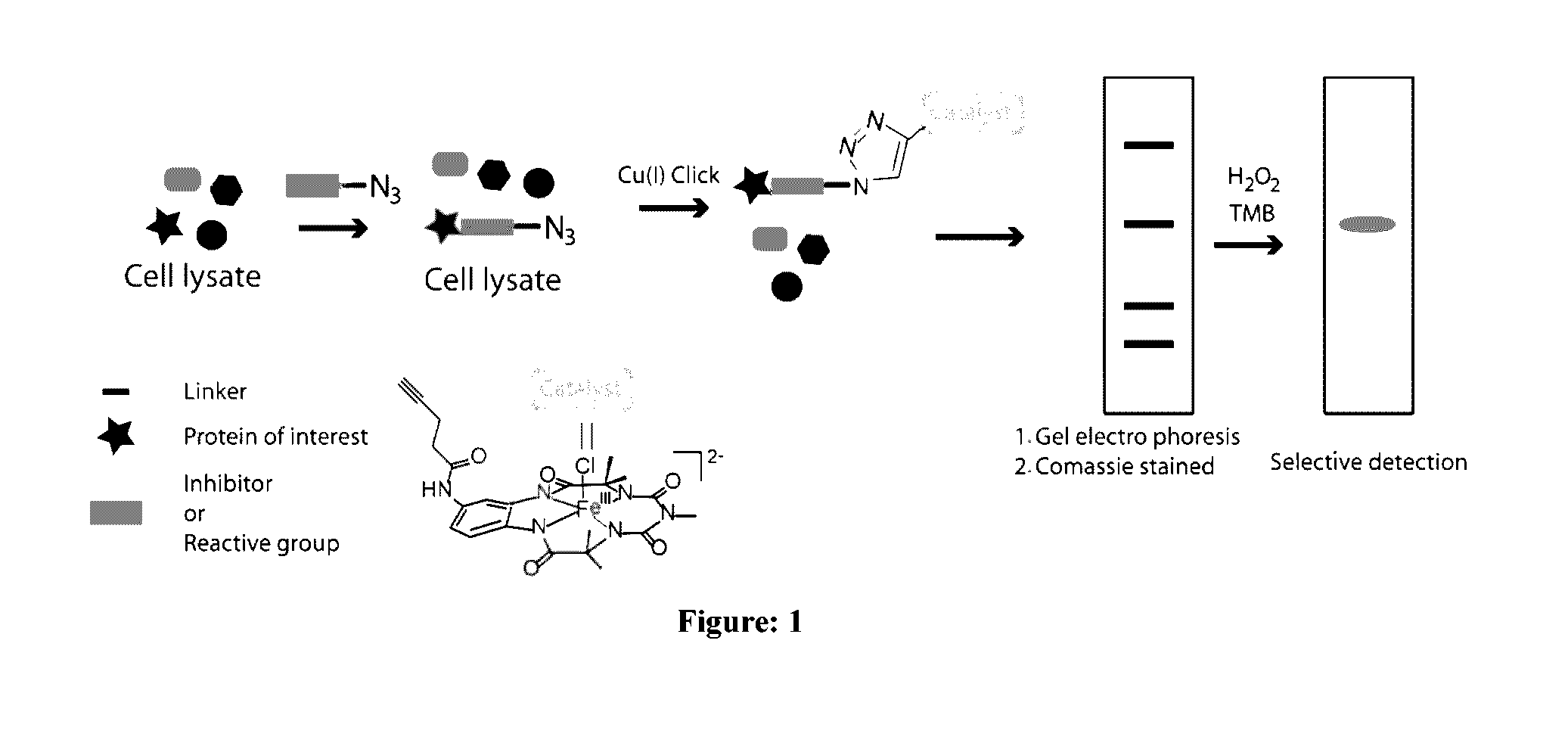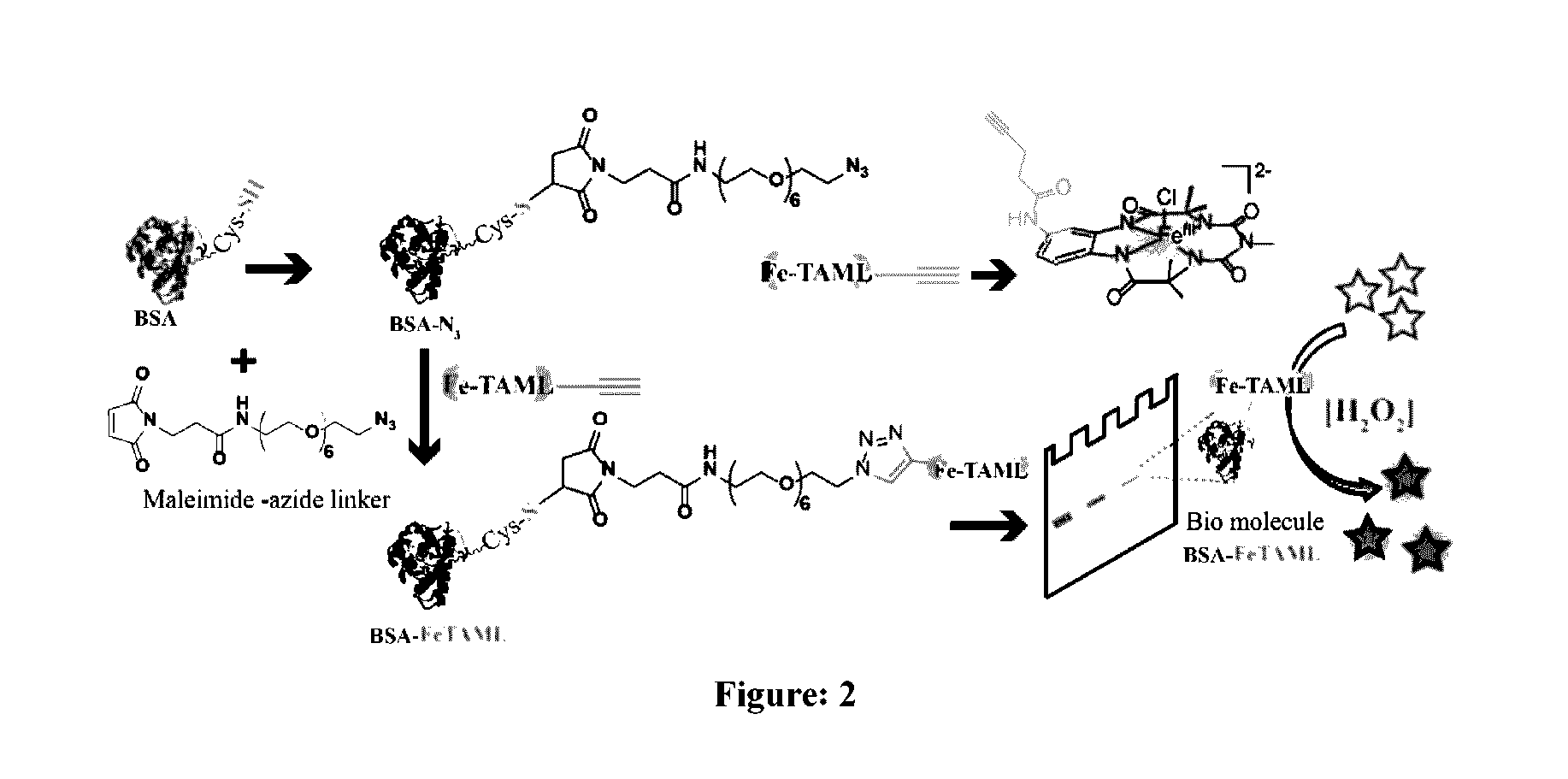Method for in-gel visual detection of bioanalytes
a bioanalyte and visual detection technology, applied in the field of analytical proteomics, can solve the problems of severe limitations of assays, prohibitive cost of antibody conjugated hrp, long duration of assays, etc., and achieve the effect of low detection limits
- Summary
- Abstract
- Description
- Claims
- Application Information
AI Technical Summary
Benefits of technology
Problems solved by technology
Method used
Image
Examples
example 1
[0086](a) Synthesis of maleimide-azide linker (3)
The maleimide-NHS linker (1) was prepared by the procedure reported in H. Y. Song, M. H. Ngai, Z. Y. Song, P. A. MacAry, J. Hobley, M. J. Lear, Org. Biomol. Chem. 2009, 7, 3400-3406. To a 0.75 ml solution of maleimide-NHS linker (7 mg; 26 mmol, leq) in dry THF was added a solution of azido-pegamine (2) (10 mg; 28.5 mmol, 1.1 eq) prepared in 0.75 ml of dry THF and stirred at room temperature for 1 hr. The reaction was monitored by TLC over time. After completion of the reaction, the product maleimide-azide (3) linker was taken out and kept at −20° C. for further protein conjugation reaction without any further purification. Considering 100% consumption of maleimide-NHS linker; concentration of maleimide-azide was assumed to be 17.3 mM. HR-MS showed m / z values 502 corresponding to the M-H+ species in the positive ion mode of the instrument.
[0087](b) Labeling of the BSA with maleimide-azide (BSA-N3)
[0088]To a solution of BSA (2 mg / mL; 1 ...
example 2
Selective Labeling of Serine Hydrolases with FP-N3 and Subsequent CuAAC for the Conjugation of biuret-Fe-TAML
[0091]To extend the assay to real sample analysis as achieved in ABPP, a fluorophosphonate-azide (FP-N3) probe was designed which would have the ability to bind serine hydrolase family of enzymes and subsequently be “clicked” to alkyne-biuret-Fe-TAML. The strategy of azido-linked suicide inhibitor probes has been used by Cravatte et al. for profiling glycosyltransferases. An ABPP probe containing a fluorophosphonate war head, an oligoethyleneglycol linker and an alkyl-azide handle (FIG. 1). To test the efficacy of FP-N3 towards serine hydrolases, FP-N3 (40 μM) was incubated with equal amounts of two serine proteases (1 μM; trypsin and chymotrypsin) and their respective zymogens (trypsinogen and chymotrypsinogen) for 30 min. Proteins labelled with FP-N3 were then incubated with biuret-Fe-TAML using CuAAC. The products of each reaction were diluted with SDS-PAGE loading buffer,...
example 3
Selective Labelling of Serine Proteases in Presence of a Mixture of Proteins
[0092]To simulate a model proteome mixture, selectivity of the FP-N3 / alkyne-biuret-Fe-TAML probe towards serine protease was then evaluated in the presence of mixture of proteins (1 μM of each protein; FP-N3 100 μM). The protein mixture was incubated with FP-N3 probe for 30 min, followed by CuAAC with alkyne-tagged biuret-Fe-TAML. Analysis by SDS-PAGE / TMB / H2O2 shows formation of a blue coloured band exactly where the Trypsin-FP-Fe-TAML conjugate was expected. No other bands were observed. The SDS-PAGE (FIG. 8) result demonstrates that using a combination of FP-N3 and alkyne-biuret-Fe-TAML serine hydrolase enzymes can be effectively labelled and visually detected among a mixture of proteins.
PUM
| Property | Measurement | Unit |
|---|---|---|
| concentration | aaaaa | aaaaa |
| molecular weight | aaaaa | aaaaa |
| mass | aaaaa | aaaaa |
Abstract
Description
Claims
Application Information
 Login to View More
Login to View More - R&D
- Intellectual Property
- Life Sciences
- Materials
- Tech Scout
- Unparalleled Data Quality
- Higher Quality Content
- 60% Fewer Hallucinations
Browse by: Latest US Patents, China's latest patents, Technical Efficacy Thesaurus, Application Domain, Technology Topic, Popular Technical Reports.
© 2025 PatSnap. All rights reserved.Legal|Privacy policy|Modern Slavery Act Transparency Statement|Sitemap|About US| Contact US: help@patsnap.com



